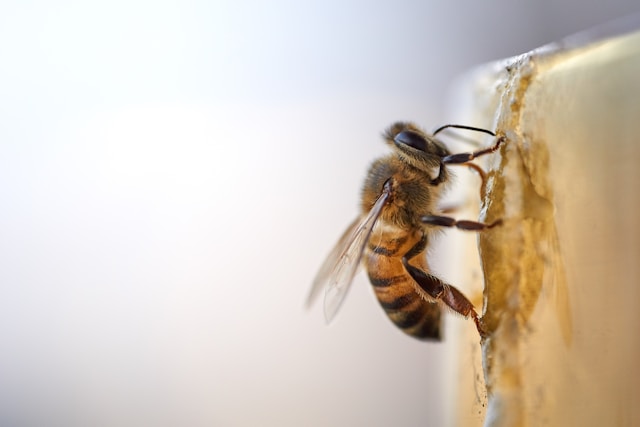Introduction
As an experienced beekeeper, you’ve mastered the basics of hive management and are ready to take your beekeeping to the next level. Advanced hive management techniques can significantly enhance the health and productivity of your colonies. This article delves into the top five advanced strategies to help you optimize your beekeeping practices and ensure your hives thrive.
1. Integrated Pest Management (IPM)
Integrated Pest Management (IPM) is a comprehensive approach to controlling pests and diseases while minimizing the use of chemical treatments. IPM combines multiple strategies to keep pest populations under control and maintain hive health.
Key Techniques:
- Monitoring and Identification: Regularly inspect your hives to identify pest and disease issues early. Use sticky boards, alcohol washes, and visual inspections to monitor Varroa mite levels and other pests;
- Mechanical Controls: Utilize methods such as drone brood removal, screened bottom boards, and hive manipulation to reduce pest populations. For example, removing drone brood can help control Varroa mites, as they prefer to reproduce in drone cells;
- Biological Controls: Introduce beneficial organisms that prey on pests. For instance, the predatory mite Stratiolaelaps scimitus can help control Varroa mites;
- Chemical Controls: When necessary, use organic or soft chemical treatments such as formic acid, oxalic acid, or essential oils. Rotate treatments to prevent resistance buildup and follow recommended dosages to avoid harming your bees.
2. Queen Rearing and Management
Effective queen management is crucial for maintaining strong and productive colonies. Raising your own queens allows you to select for desirable traits such as disease resistance, productivity, and temperament.
Key Techniques:
- Grafting: Transfer young larvae into queen cups to raise new queens. Grafting requires precision and practice but allows for the selection of the best genetics;
- Queenright and Queenless Starter Colonies: Use strong, queenright colonies to start queen cells and queenless colonies to finish them. This method ensures high-quality queens;
- Splitting Hives: Create nucleus colonies (nucs) by splitting strong hives and introducing new queens. This practice helps prevent swarming and increases your number of colonies;
- Requeening: Regularly requeen your hives to maintain vigor and productivity. Replace old or failing queens with young, productive ones.
3. Seasonal Management
Understanding and adapting to the seasonal needs of your colonies is essential for their health and productivity. Tailor your management practices to the specific demands of each season.
Key Techniques:
- Spring Management: Focus on population buildup, disease prevention, and swarm management. Provide supplemental feeding if necessary and monitor for early signs of swarming;
- Summer Management: Ensure adequate ventilation and water supply to prevent overheating. Manage honey supers efficiently and monitor for pests and diseases;
- Fall Management: Prepare your colonies for winter by ensuring they have sufficient food stores and reducing the hive entrance to prevent robbing. Treat for Varroa mites and other pests before winter;
- Winter Management: Insulate your hives if necessary and provide ventilation to prevent moisture buildup. Monitor the hives during winter and provide emergency feeding if needed.
4. Supering and Honey Harvesting
Efficient supering and honey harvesting techniques can maximize your honey yield and maintain hive health.
Key Techniques:
- Adding Supers: Add honey supers as needed to give your bees space to store nectar. Timely supering prevents overcrowding and swarming;
- Checkerboarding: Alternate empty frames with full ones in the brood nest to encourage bees to move upward and reduce swarming;
- Honey Harvesting: Harvest honey frames that are at least 80% capped to ensure proper moisture content. Use an extractor to spin out the honey and minimize damage to the comb;
- Post-Harvest Management: Return extracted frames to the hive for bees to clean and reuse. Ensure bees have enough honey stores for winter after harvesting.
5. Sustainable Beekeeping Practices
Incorporating sustainable practices into your beekeeping routine promotes long-term hive health and environmental stewardship.
Key Techniques:
- Natural Comb Building: Allow bees to build natural comb without foundation to encourage natural behaviors and reduce disease transmission;
- Small Cell Beekeeping: Use smaller cell sizes in your frames to promote natural mite resistance and healthier brood development;
- Polyfloral Foraging: Encourage diverse foraging by planting a variety of nectar and pollen sources. This diversity supports bee health and productivity;
- Minimal Chemical Use: Reduce reliance on chemical treatments by focusing on preventive measures and natural alternatives. Regularly monitor hive health and intervene only when necessary.
Conclusion
Mastering advanced hive management techniques can significantly enhance your beekeeping success. By integrating pest management, effective queen rearing, seasonal adjustments, efficient honey harvesting, and sustainable practices, you can ensure the health and productivity of your colonies. Continuous learning and adaptation are key to thriving as an experienced beekeeper. Embrace these advanced strategies and watch your apiary flourish.
